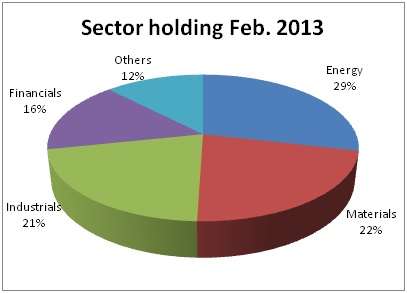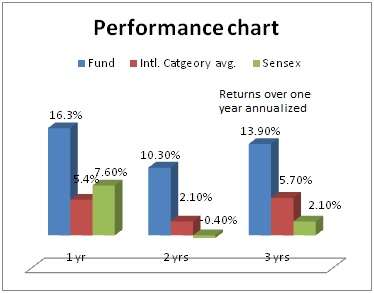‘Real’ Assets for Hard Times
Real assets – assets that are tangible – have traditionally been preferred by investors for a few reasons: they provide the comfort of physical holding, and have a track record of beating inflation by providing some protection to the investor’s wealth during tough times.
In the Indian context, assets such as property and gold are the typical real assets that one can own as a retail investor.
But what if you had a fund that would invest in stocks that dealt with real assets such as oil wells, mines, infrastructure, utilities, and land and building, to name a few, while being much more liquid than property or gold? That is what L&T Global Real Assets seeks to do through a global fund – Fidelity Global Real Asset Securities Fund.
True to its name, L&T Global Real Assets has delivered inflation-beating returns of 14 per cent annually in the last three years; the rupee depreciation also bolstering returns.
This return is not only higher than its own benchmark – an MSCI blended index, but amongst the highest in the Indian equity category (including theme funds), next only to Magnum Emerging Businesses. The Sensex delivered just 2.5 per cent annually over this period.
Fund Features
L&T Global Real Assets is a fund-of-fund. It simply invests in the foreign fund – Fidelity Global Real Asset Securities Fund. Being invested in international equity, it does not enjoy capital gains tax benefits similar to locally-invested equity funds. It is treated like a debt fund for tax purposes alone.
L&T Global Real Assets, earlier called Fidelity Global Real Assets, was part of the Fidelity family. Unlike other Fidelity funds that saw fund management change as a result of the L&T takeover, this fund did not see any disruption in the ultimate fund management.
In other words, L&T continues to invest in the Fidelity global fund, which is managed by Amit Lodha. Nevertheless, the fund did see some outflow as investors had the option to exit during the L&T takeover.
Portfolio & Performance

L&T Global Real Assets has been a stellar performer ever since it was launched in 2010. It has a high risk-adjusted return since its launch and has a rolling-one year return of 15 per cent in the last three years.
The timing of the launch was perfect for the fund as the continuing global turmoil ensured that ‘real assets’ across the globe firmed up in value.
This fund has beaten funds with other international themes such as energy, agriculture or real estate, over a three-year period, although it also invests in somewhat similar sectors.
A good 42% of its stocks are in the U.S. and the rest are spread across U.K., Canada, Japan and other nations.
In the last one year, the fund’s return of 16.5 per cent has marginally lagged some of the U.S.-focused funds and Asian funds, the latter performing better after a poor year earlier. The fund’s high exposure to the energy space also pulled down performance a bit, given the stabilizing crude prices.

Despite high exposure to the U.S., the companies it invests in derive their revenues globally . Exposures to stocks of companies such as Exxon Mobil, Anadarko Petroleum, or Halliburton serve as good examples.
Suitability
At present, we do not have a call on L&T Global Real Assets. But investors looking to diversify their holdings in international stocks and currencies can continue to hold the fund; albeit limiting their exposure to 5-10 per cent of their total holdings.
The fund provides exposure to stocks that are not available in the Indian space. For instance, opportunities to invest in a Real Estate Investment Trust or an aircraft manufacturing company may be hard to come by locally.
The size of the companies held and their varied geographic presence lends further diversification to your portfolio. Also, given its more diversified theme, it is unlikely to be entirely hurt by commodity cycles.
On the flip side, the fund hiked its maximum expense ratio to 2.5 per cent after it moved away from Fidelity’s hands. As a result, although the fund-of-fund per se has a low expense ratio, the total ratio (including that of the primary fund) may be close to 2.5 per cent.
That said, it is worth noting that the returns you see on the NAV are post the deduction of the expense ratio, suggesting that it has delivered well, costs notwithstanding.
An active profit-booking strategy would be required if you hold this fund. Setting triggers, based on your expected returns may be a good automated option.









Dear Ms. Vidya,
Insightful article.
Are there any restrictions by the government of India (SEBI, RBI etc) on Mutual Funds and insurance funds on how much they can invest abroad? Or any other conditions on them?
Surely, the government would not be happy with institutional investments just flowing out of India.
Best,
Gautam
Hello Gautam, yes there are restrictions by RBI for individuals, institutions etc and there are approval routes and automatic routes as well. For individuals it is $ 2 lkah per annum of investments allowed. For instiutions it varies. For instance, it is $7 billion for MFs as a total and within that $1 billion for investing in overseas ETFs.
Such portfolio investment is part of give and take policies between countries and cannot be curbed by the government suddenly, without a reaction from the other side. Hence, happy or not, the government continues with it. Also, it is much lower than the money that the government gets as FII into India.
Tks, Vidya
Thank you for your response, Ms. Vidya.
Insurance funds, on the other hand, don’t have the rights to invest abroad. Am I right about this?
Apologies for bothering you with unrelated questions, but I wish to gain a better understanding of overseas investments before I can start investing myself.
Warm regards,
Gautam
Hello Gautam, Yes, IRDA prohibits policy holders’ money being invested overseas. Thanks.
Dear Ms. Vidya,
Insightful article.
Are there any restrictions by the government of India (SEBI, RBI etc) on Mutual Funds and insurance funds on how much they can invest abroad? Or any other conditions on them?
Surely, the government would not be happy with institutional investments just flowing out of India.
Best,
Gautam
Hello Gautam, yes there are restrictions by RBI for individuals, institutions etc and there are approval routes and automatic routes as well. For individuals it is $ 2 lkah per annum of investments allowed. For instiutions it varies. For instance, it is $7 billion for MFs as a total and within that $1 billion for investing in overseas ETFs.
Such portfolio investment is part of give and take policies between countries and cannot be curbed by the government suddenly, without a reaction from the other side. Hence, happy or not, the government continues with it. Also, it is much lower than the money that the government gets as FII into India.
Tks, Vidya
Thank you for your response, Ms. Vidya.
Insurance funds, on the other hand, don’t have the rights to invest abroad. Am I right about this?
Apologies for bothering you with unrelated questions, but I wish to gain a better understanding of overseas investments before I can start investing myself.
Warm regards,
Gautam
Hello Gautam, Yes, IRDA prohibits policy holders’ money being invested overseas. Thanks.